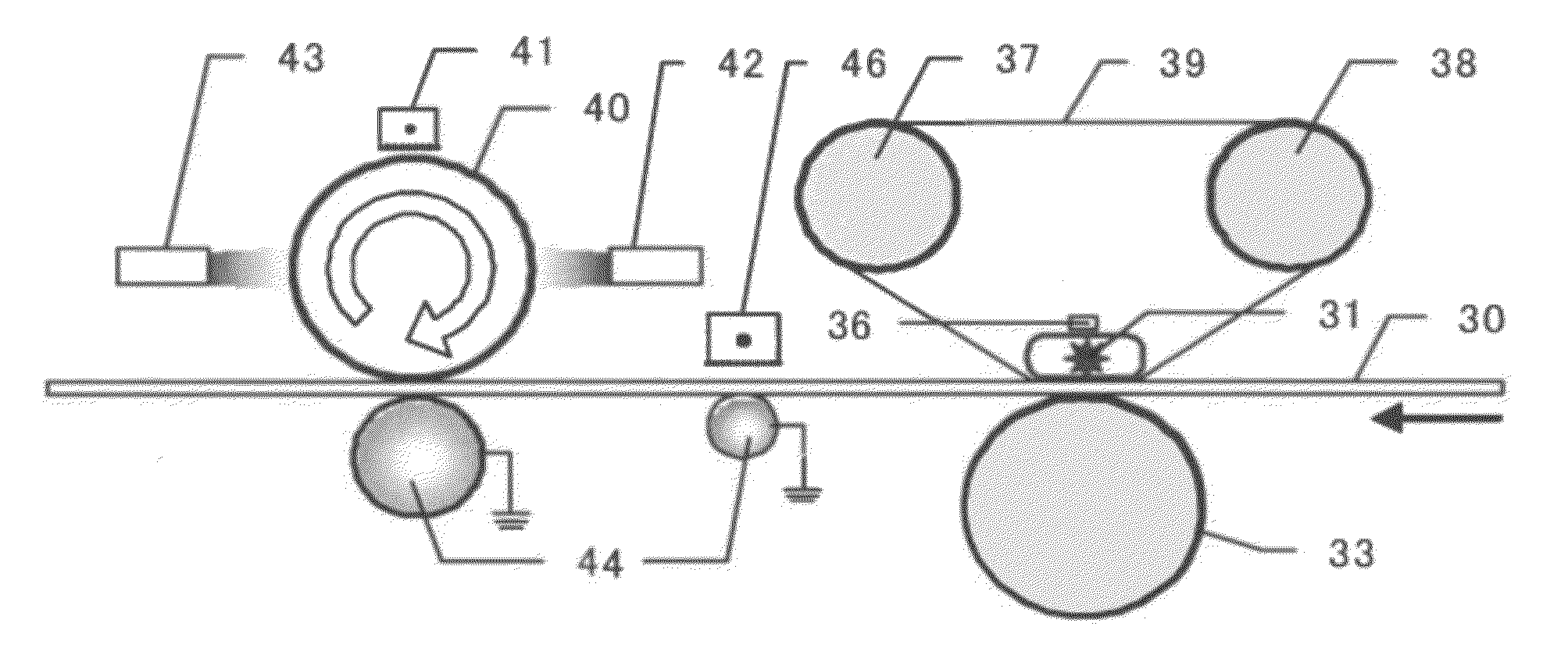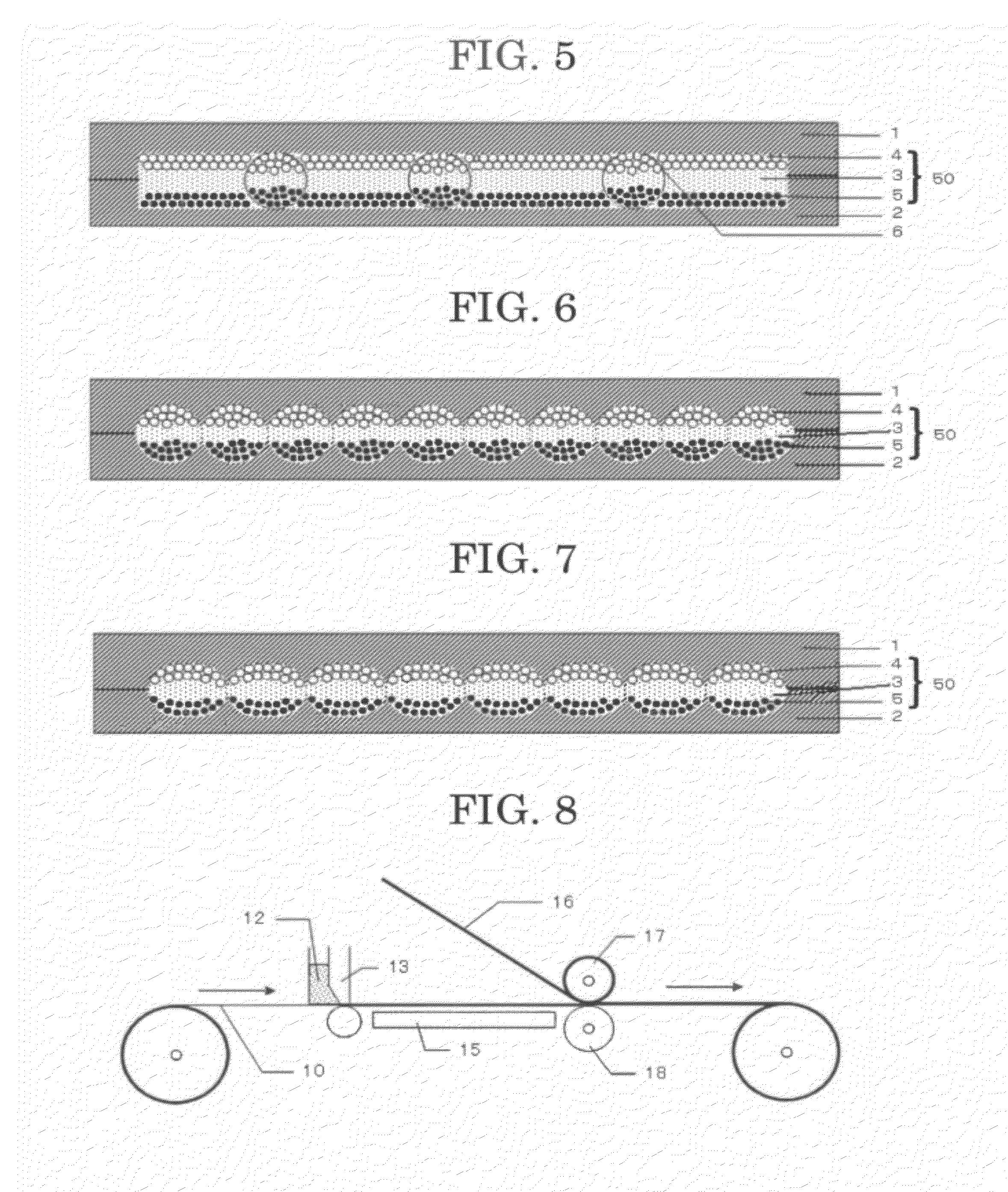Rewritable recording medium, image recording set, and image recording method
- Summary
- Abstract
- Description
- Claims
- Application Information
AI Technical Summary
Benefits of technology
Problems solved by technology
Method used
Image
Examples
example 1
[0341]Put in a reaction container containing a stirrer and a temperature controller was a solvent obtained by mixing 93 parts of ethanol and 7 parts of water and adjusted to pH 4.5 with glacial acetic acid. 16 parts of 3-(trimethoxysilyl)propyl methacrylate was added and dissolved, and then, 100 parts of titanium oxide was added, and stirred for 10 minutes. Then, 180 parts of ethanol was added and stirred, and a solid content collected by centrifugal separation was left for twenty-four hours, and then vacuum-dried for 4 hours at 70° C., whereby obtaining surface-treated titanium oxide.
[0342]Next, 130 parts of toluene and 100 parts of lauryl methacrylate were put in a reaction container containing a stirrer, a thermometer, and a reflux condenser, and dissolved. 50 parts of toluene in which 75 parts of the above-described surface-treated titanium oxide and 0.5 parts of azobisisobutyronitrile were dissolved was further added, and heated and stirred for 6 hours at 70° C. under a nitroge...
example 2
[0359]The rewritable recording medium fabricated in Example 1 was evaluated by using an image recording device different from that used in Example 1. This image recording device was designed so that the rewritable recording medium can be conveyed linearly, and was provided with a heating unit configured to heat the rewritable recording medium, a corotron electric field applying unit, and a cooling unit using a fan in this order. The heating unit was set so that the surface temperature of the rewritable recording medium reached 60° C. A counter electrode was provided at a position opposed to the electric field applying unit via the rewritable recording medium.
[0360]The rewritable recording medium fabricated in Example 1 was heated to 60° C. by the heating unit to convert the dispersion medium into a liquid, and further, a white solid image was recorded (image erasing) by positively charging the entire surface of the rewritable recording medium by the electric field app...
example 3
[0367]A rewritable recording medium was fabricated in the same manner as in Example 1 except that the thermoreversible gelling agent in Example 1 was replaced by a compound represented by the following structural formula (7-1).
[0368]The gel-to-sol transition temperature of isoparaffin-based hydrocarbon solvent by the action of the thermoreversible gelling agent was 45° C., and the sol-to-gel transition temperature was 30° C.
[0369]A (the number of silicon atoms) / B (the total number of amide bonds (—NHCO—) and urethane bonds (—NHCOO—) in the molecule) was 1.5.
[0370]The thermoreversible gelling agent represented by the following structural formula (7-1) was synthesized by referring to the silicone derivative synthesis method described in JP-A No. 2005-232108.
[0371]The fabricated rewritable recording medium was heated to 55° C. by the same heating unit as in Example 2 to convert the dispersion medium into a liquid, and further, a white solid image was recorded (image eras...
PUM
 Login to View More
Login to View More Abstract
Description
Claims
Application Information
 Login to View More
Login to View More - R&D
- Intellectual Property
- Life Sciences
- Materials
- Tech Scout
- Unparalleled Data Quality
- Higher Quality Content
- 60% Fewer Hallucinations
Browse by: Latest US Patents, China's latest patents, Technical Efficacy Thesaurus, Application Domain, Technology Topic, Popular Technical Reports.
© 2025 PatSnap. All rights reserved.Legal|Privacy policy|Modern Slavery Act Transparency Statement|Sitemap|About US| Contact US: help@patsnap.com



